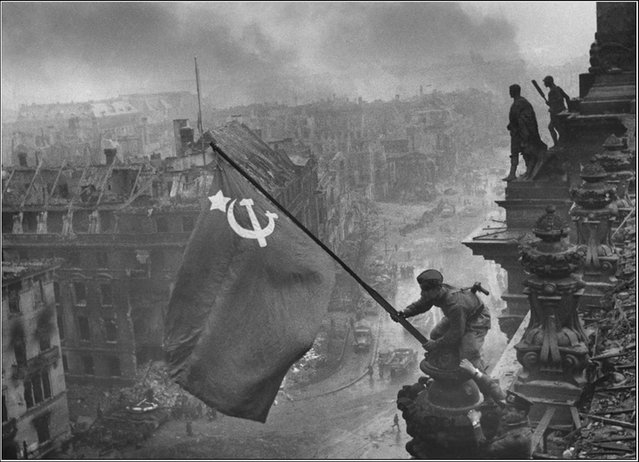
Raising a flag over the Reichstag is a historic World War II photograph taken during the Battle of Berlin on 2 May 1945, by Yevgeny Khaldei.
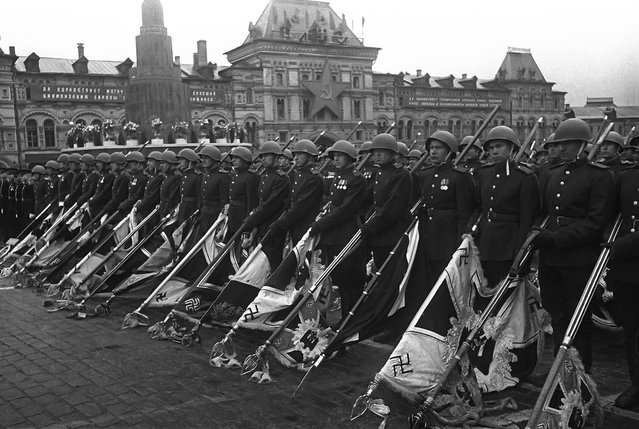
Soviet soldiers with lowered standards of the defeated Nazi forces during the Victory Day parade in Moscow, on June 24, 1945. (Yevgeny Khaldei/Waralbum.ru)

The return of victorious Soviet soldiers at a railway station in Moscow in 1945. (Arkady Shaikhet/Waralbum.ru)

Red Army photographer Yevgeny Khaldei (center) in Berlin with Soviet forces, near the Brandenburg Gate in May of 1945. (Waralbum.ru)
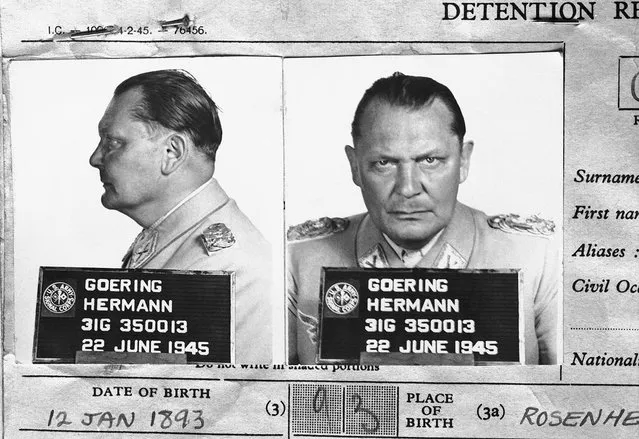
Hermann Goering, once the leader of the formidable Luftwaffe and second in command of the German Reich under Hitler, appears in a mugshot on file with the Central Registry of War Criminals and Security Suspects in Paris, France, on November 5, 1945. Goering surrendered to U.S. soldiers in Bavaria, on May 9, 1945, and was eventually taken to Nuremburg to face trial for War Crimes. (AP Photo)
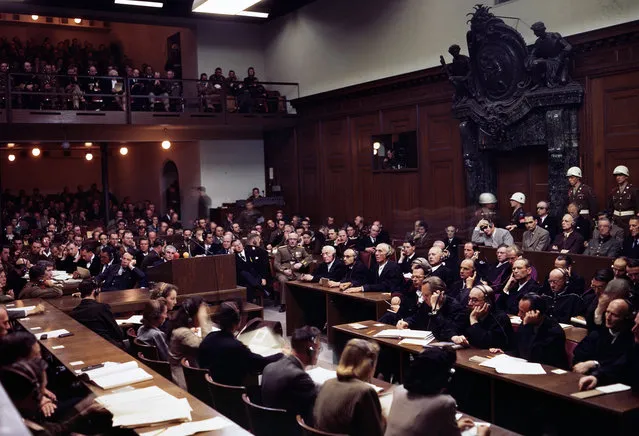
The interior of the courtroom of the Nuremberg War Crimes Trials in 1946 during the Trial of the Major War Criminals, prosecuting 24 government and civilian leaders of Nazi Germany. Visible here is Hermann Goering, former leader of the Luftwaffe, seated in the box at center right, wearing a gray jacket, headphones, and dark glasses. Next to him sits Rudolf Hess, former Deputy Fuhrer of Germany, then Joachim von Ribbentrop, former Nazi Minister of Foreign Affairs, Wilhelm Keitel, former leader of Germany's Supreme Command (blurry face), and Ernst Kaltenbrunner, the highest ranking surviving SS-leader. Goering, von Ribbentrop, Keitel, and Kaltenbrunner were sentenced to death by hanging along with 8 others – Goering committed suicide the night before the execution. Hess was sentenced to life imprisonment, which he served at Spandau Prison, Berlin, where he died in 1987. (AP Photo/STF)
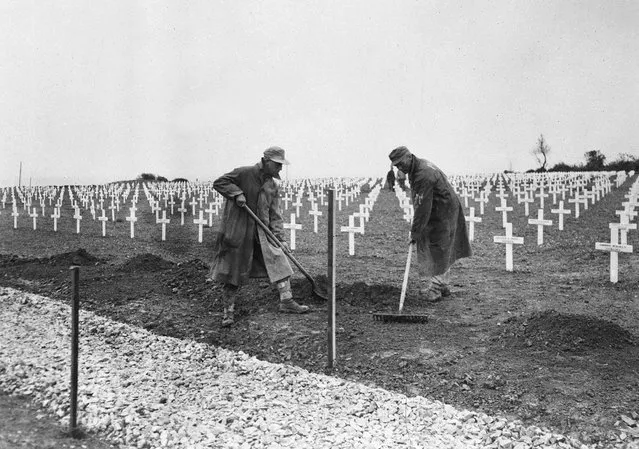
One year after the D-Day landings in Normandy, German prisoners landscape the first U.S. cemetery at Saint-Laurent-sur-Mer, France, near “Omaha” Beach, on May 28, 1945. (AP Photo/Peter J. Carroll)
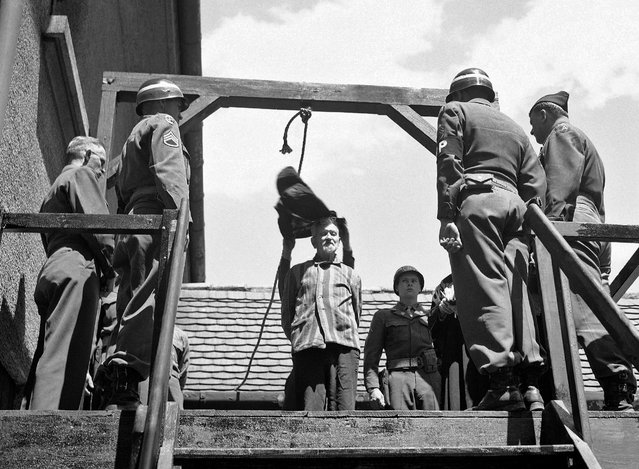
U.S. military authorities prepare to hang Dr. Klaus Karl Schilling, 74, at Landsberg, Germany, on May 28, 1946. In a Dachau war crimes trial he was convicted of using 1,200 concentration camp prisoners for malaria experimentation. Thirty died directly from the inoculations and 300 to 400 died later from complications of the disease. His experiments, all with unwilling subjects, began in 1942. (AP Photo/Robert Clover)

U.S. General George S. Patton acknowledges the cheers of thousands during a parade through downtown Los Angeles, California, on June 9, 1945. Shortly thereafter, Patton returned to Germany and controversy, as he advocated the employment of ex-Nazis in administrative positions in Bavaria; he was relieved of command of the 3rd Army and died of injuries from a traffic accident in December, after his return home. Joe Rosenthal's famous Iwo Jima flag-raising photograph is visible on the war bonds billboard. (AP Photo)
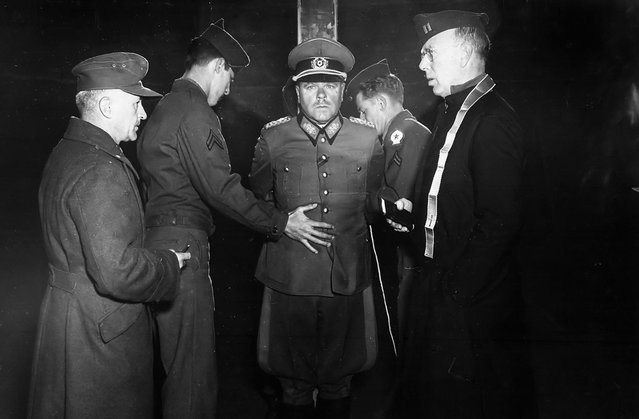
German Wehrmacht General Anton Dostler is tied to a stake before his execution by a firing squad in a stockade in Aversa, Italy, on December 1, 1945. The General, Commander of the 75th Army Corps, was sentenced to death by an United States Military Commission in Rome for having ordered the shooting of 15 unarmed American prisoners of war, in La Spezia, Italy, on March 26, 1944. (AP Photo)
09 May 2012 02:27:00,
post received
0 comments
